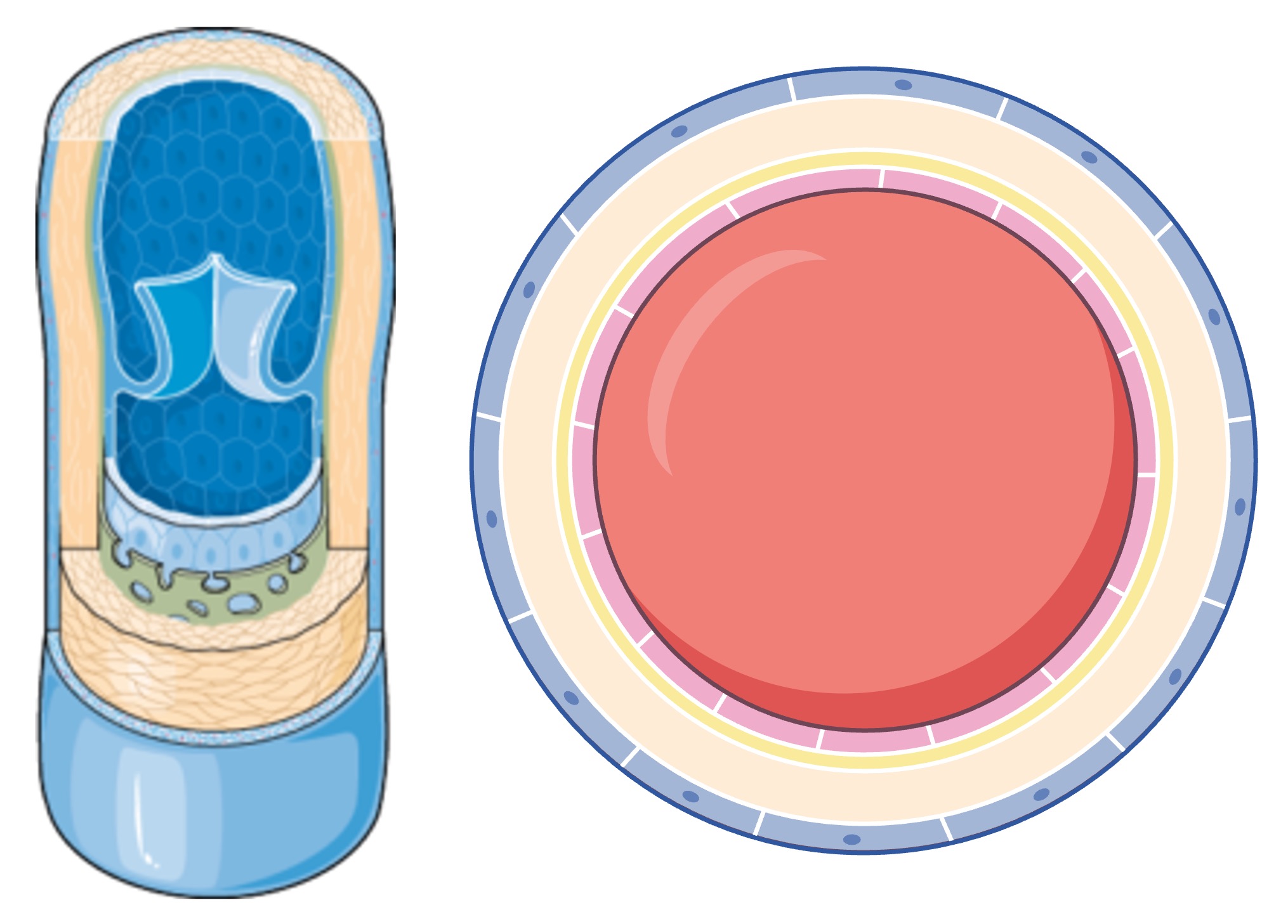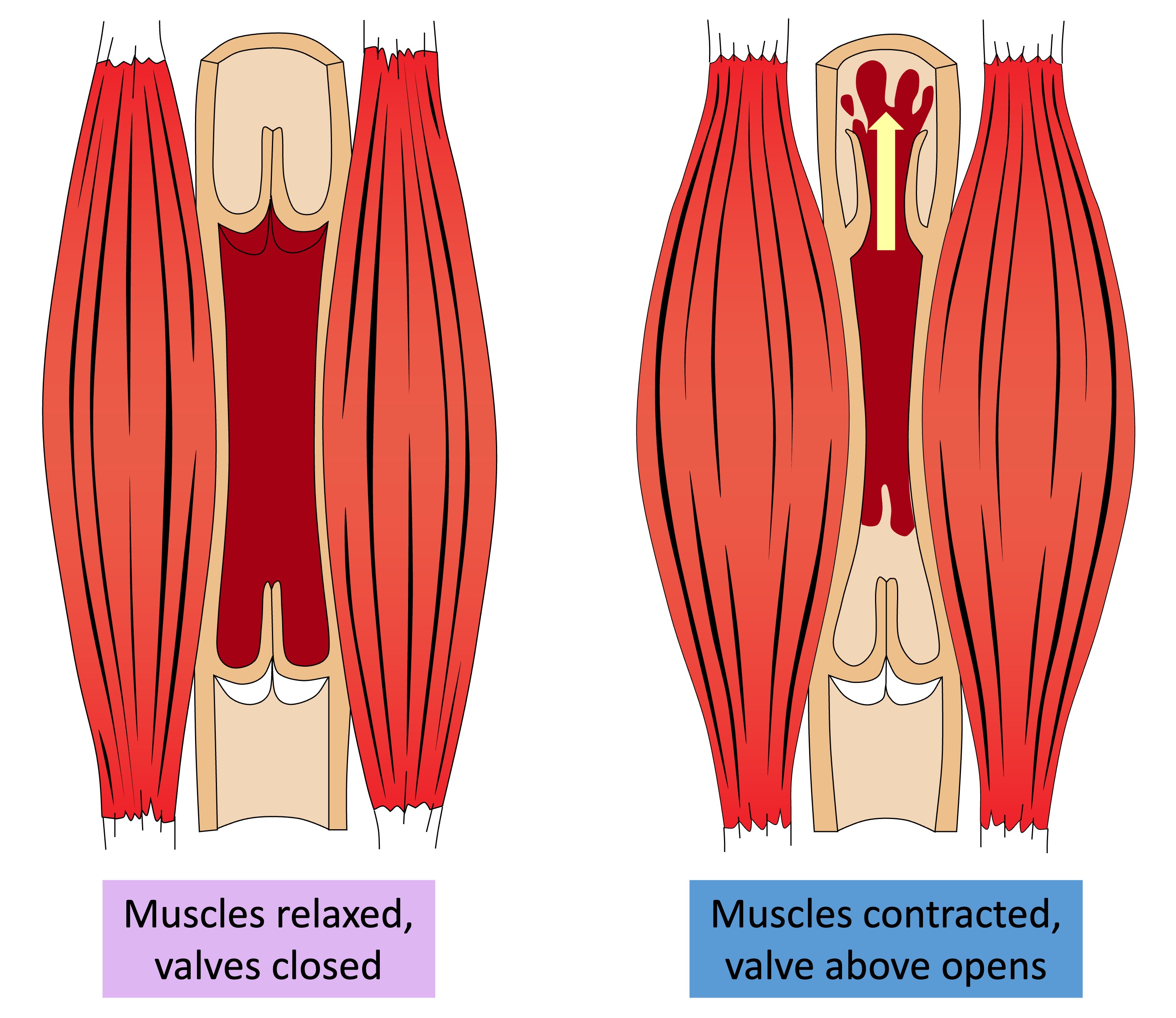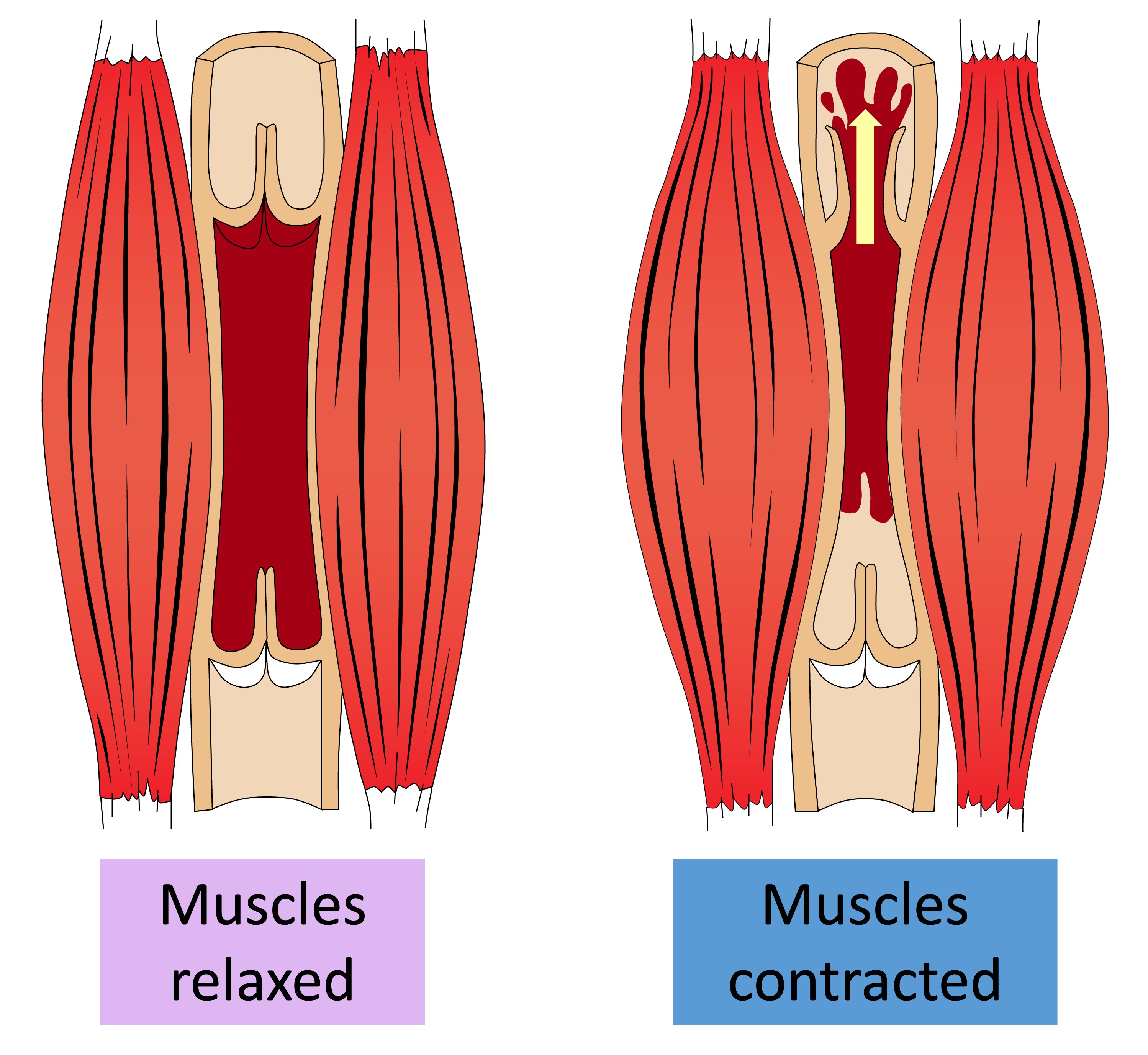

Veins
Structure and Function
The function of veins is to convey blood at low pressure back to the heart – to accomplish this task, veins have a specialised structure:
-
They have a very wide lumen (relative to wall thickness) to maximise blood flow for more effective return
-
They have a thin wall containing less muscle and elastic fibres as blood is flowing at a very low pressure
-
Because the pressure is low, veins possess valves to prevent backflow and stop the blood from pooling at the lowest extremities
Structure of a Vein

Flow of Blood
Blood is at very low pressure in the veins which can make it difficult for the blood to move against the downward force of gravity
-
The veins contain numerous one-way valves in order to maintain the circulation of blood by preventing backflow
Veins typically pass between skeletal muscle groups, which facilitate venous blood flow via periodic contractions
-
When the skeletal muscles contract, they squeeze the vein and cause the blood to flow from the site of compression
-
Veins typically run parallel to arteries, and a similar effect can be caused by the rhythmic arterial bulge created by a pulse
Venous Blood Flow






